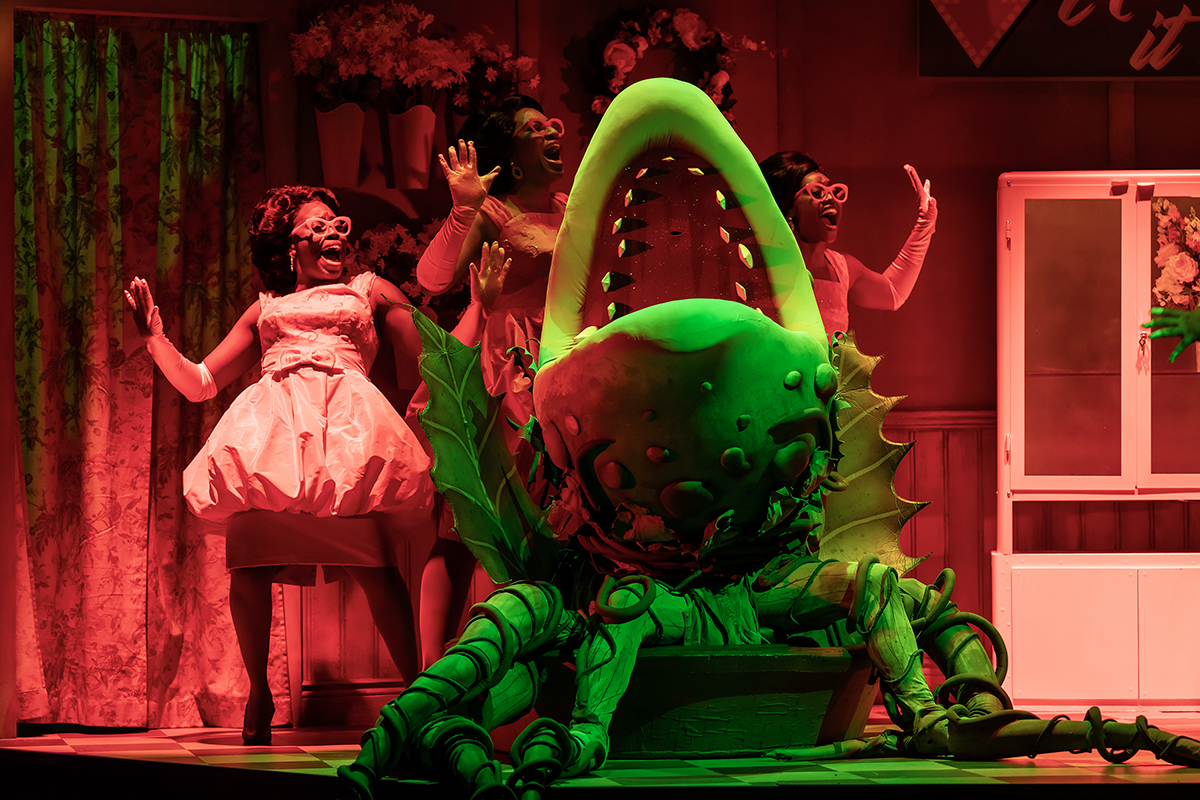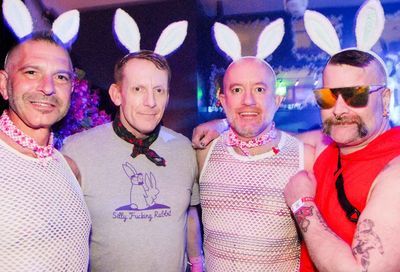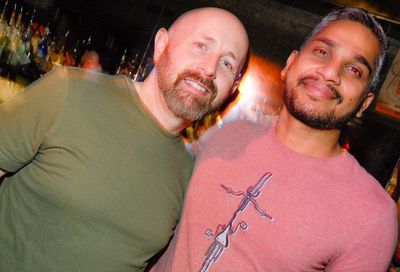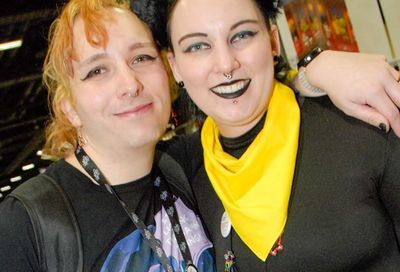From Wyoming to Washington
Marking 15 years since the murder of Matthew Shepard, Ford's Theatre builds a month of programming around ''The Laramie Project''
Exhibiting an Outpouring
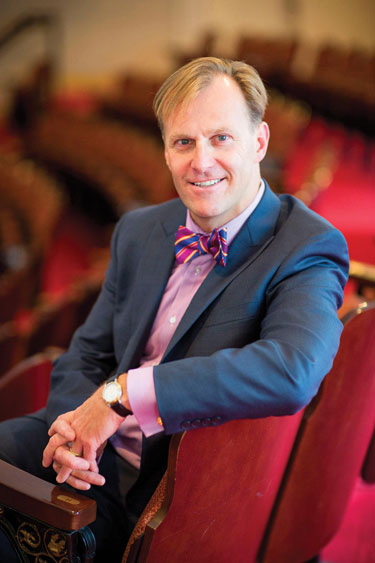
Paul Tetreault
(Photo by Scott Suchman)
WHILE GARDINER AND his cast and crew prepare the stage production, others have given attention to the complementary exhibit now open in Ford’s Center for Education and Development, Not Alone: The Power of Response. Almost by accident, the nature of the exhibit was a sort of gift from Judy Shepard.
Months ago, in late winter, Tetreault was sitting in a conference room in the center, discussing with Judy Shepard the programming that would revolve around The Laramie Project. Sitting at the same table where the two spoke, he tells the story these months later.
”I said, ‘We have this gallery space downstairs and we’d really like to do something great with that,”’ Tetreault recalls telling Judy Shepard. ”And she said, ‘Well, you know, we have these letters. After Matthew’s beating and murder, we got over 10,000 letters and cards. They’re in the basement of our home in Casper and no one’s ever seen them. You can have access to those.’
”That meeting, in this room, is where that exhibit was born. We sent a team of four people to Casper, Wyo., shortly after that.”
Heading that team was Tracey Avant, Ford’s curator of exhibitions, who found herself in a somewhat surreal setting, standing in a storage room off the Shepards’ finished basement, facing several boxes of correspondence and other materials related to Matthew Shepard’s death and the response it generated – a very sizable response.
”They had these tubs, bins stacked up with the materials,” Avant explains of her expedition to Casper. ”We knew going in there would be about 10 of these bins filled with letters. Someone had gone through them when they got donations and things like that, but they weren’t organized in any particular way.”
Avant and her team set to work there in the Shepards’ basement, reading the letters, making high-resolution digital scans, keeping an eye on what might be appropriate for an exhibit back in Washington.
The most surprising find, Avant says, wasn’t in anything they discovered, but what they did not.
”The biggest thing I took away from this experience is that when these things happen, you realize that more people are compassionate and caring and understanding than not,” she says. ”In the course of these 10,000 letters, they probably received less than a handful of hate mail, which to me was shocking. I would’ve assumed that there would’ve been a lot more.”
There was also something notable in that this sort of experience is rare for a curator, says Avant, with the ”history” in question still relatively recent, still actually unfolding.
”These people are alive, we spent time in their house,” Avant says of Dennis and Judy Shepard. ”That is a really unusual experience. And they are the most amazing and warm people, welcomed us into their home. You go into a situation like that with trepidation. You don’t want to impose. They’ve invited you to do this, but you’re in their home, their personal space. So to be able to work with material like this, that you have a real human connection with, especially doing history exhibits, it’s rare that you have that kind of modern history. I’d never had an opportunity to do that. It’s been pretty emotional and amazing.”
What Ford’s has created as a result is also emotional and amazing, with letters suspended behind glass in a space that is otherwise unassuming, with only a few benches. Avant says this is the first exhibit that’s prompted the center to leave boxes of tissues on those benches. But some letters will likely elicit a strong response – maybe not the two from Bill Clinton, or some of the other similarly stately messages, but certainly those written by children or just everyday people compelled to respond with some positive action to the hate and violence that killed Matthew Shepard.
Avant mentions one of her favorite examples.
”There was a young woman who wrote from New York shortly after, saying that she was going to start this tennis tournament, this ‘Tennis Jam,’ and send the proceeds,” Avant says. ”Then we have her follow-up letter from almost a year later when she sent the proceeds. She actually managed to follow through, do the tennis jam, and send the money from that.”
New Yorkers – particularly tennis-loving LGBT New Yorkers – might recognize that event as the Metropolitan Tennis Group’s Matthew Shepard Memorial Tennis Jam, marking its 14th year Oct. 13.
Letters aside, however, there is another element of the exhibit, one standalone feature that is equally as powerful. And it was also Judy Shepard’s suggestion. Tetreault, in his discussions about the exhibit with Judy Shepard, pointed to the bare wall running the length of the room opposite the display of the letters. She suggested a photograph: ”Where Matthew Lay Dying,” by Jeff Sheng. As visitors walk into the exhibit space, they face an expansive vista of snowy plains, wooden fencing in the foreground. The view is simultaneously beautiful and terrifying, sharing the point of view from where Matthew Shepard was tied to that lonely fence.
With these elements paired, one imagines Ford’s will be replacing those boxes of tissues with some regularity.
”This exhibit is revelatory,” says Tetreault. ”This is something that no one else has ever seen before. These have been in Dennis and Judy’s basement for 15 years. Judy created the exhibit, I just executed it. It was her idea. It is extraordinary.”
Support Metro Weekly’s Journalism
These are challenging times for news organizations. And yet it’s crucial we stay active and provide vital resources and information to both our local readers and the world. So won’t you please take a moment and consider supporting Metro Weekly with a membership? For as little as $5 a month, you can help ensure Metro Weekly magazine and MetroWeekly.com remain free, viable resources as we provide the best, most diverse, culturally-resonant LGBTQ coverage in both the D.C. region and around the world. Memberships come with exclusive perks and discounts, your own personal digital delivery of each week’s magazine (and an archive), access to our Member's Lounge when it launches this fall, and exclusive members-only items like Metro Weekly Membership Mugs and Tote Bags! Check out all our membership levels here and please join us today!




